Beijing, China’s ancient capital, is globally renowned for its historical landmarks such as the Forbidden City and the Great Wall. However, the city has also emerged as a hub for modern architecture in Beijing, blending the old with the new in striking ways.
With its impressive skyline and groundbreaking designs, Beijing’s contemporary buildings tell the story of a rapidly evolving metropolis. This guide will introduce you to the top modern buildings in Beijing, showcasing the city’s most iconic contemporary landmarks.
1. The National Centre for the Performing Arts (NCPA)
The National Centre for the Performing Arts (NCPA), also known as “The Egg,” is one of the most famous modern buildings in Beijing. Designed by French architect Paul Andreu, this massive glass and titanium structure resembles an egg floating on water. Surrounded by an artificial lake, the NCPA is a true architectural wonder in Beijing.
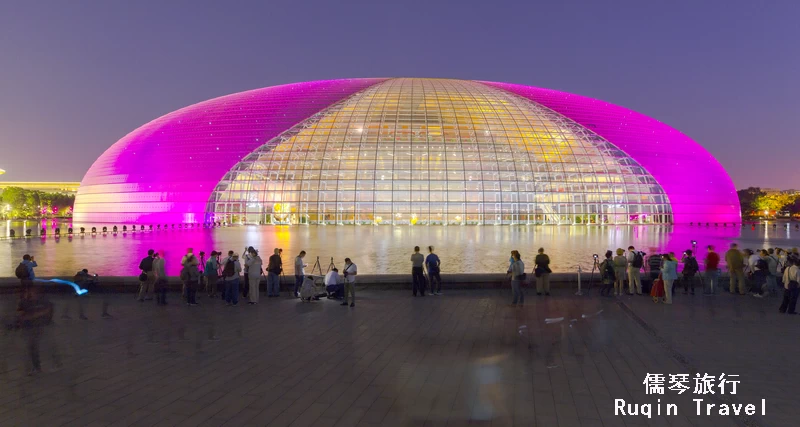
The building houses several theaters, including an opera house and concert hall. The design plays with reflections and light, making it a perfect subject for photography. The NCPA is a must-see for those interested in Beijing’s fusion of art and architecture. Its futuristic design stands out in stark contrast to the nearby ancient monuments, like Tiananmen Square and the Forbidden City.
How to get there: Located near Tiananmen Square, the NCPA is easily accessible by Subway Line 1, exiting at Tiananmen West Station.
2. China Central Television Headquarters (CCTV Tower)
Perhaps the most visually striking building in the city, the CCTV Headquarters is an iconic symbol of modern architecture in Beijing. Designed by Dutch architect Rem Koolhaas, this 44-story skyscraper has an unconventional, looped shape, making it a feat of engineering. The building’s distinct silhouette has earned it the nickname “The Pants.”
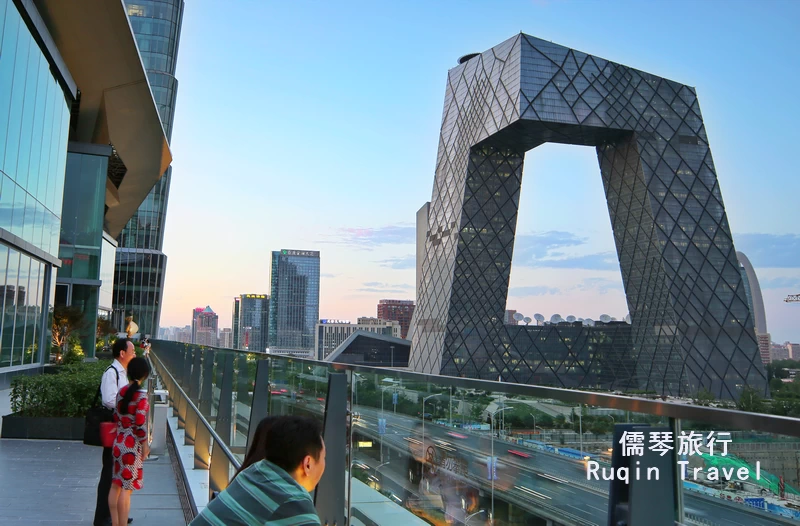
The CCTV Tower represents bold, cutting-edge architecture and is a favorite for tourists looking for unique photo opportunities. Its steel-and-glass facade reflects the changing cityscape, providing a glimpse into Beijing’s modern cityscape.
How to get there: The CCTV Tower is located in Beijing’s Central Business District (CBD), easily reachable via Subway Line 10 at Jintaixizhao Station.
3. Galaxy SOHO
Designed by world-famous architect Zaha Hadid, Galaxy SOHO is a masterpiece of fluid, organic design. This complex features interconnected domes and walkways, blending modern architecture with functional office and retail spaces. The smooth, flowing lines give the impression of continuous motion, making it one of the most visually captivating buildings in Beijing.
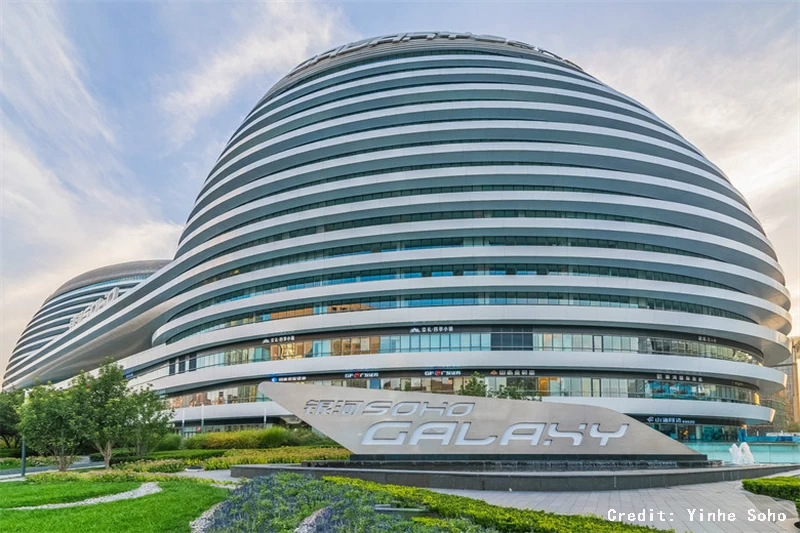
This contemporary landmark in Beijing is particularly stunning at night when the lights enhance its futuristic curves. For fans of Hadid’s work, visiting Galaxy SOHO is a must, as it perfectly embodies her innovative architectural style.
How to get there: You can reach Galaxy SOHO via Subway Line 2 or Line 6, getting off at Chaoyangmen Station.
4. The Beijing National Stadium (Bird’s Nest)
The Beijing National Stadium, also known as the Bird’s Nest, is one of the most famous contemporary landmarks in Beijing. Built for the 2008 Summer Olympics, this colossal structure was designed by Swiss architects Herzog & de Meuron in collaboration with Chinese artist Ai Weiwei. Its steel lattice design resembles a bird’s nest, hence the name.
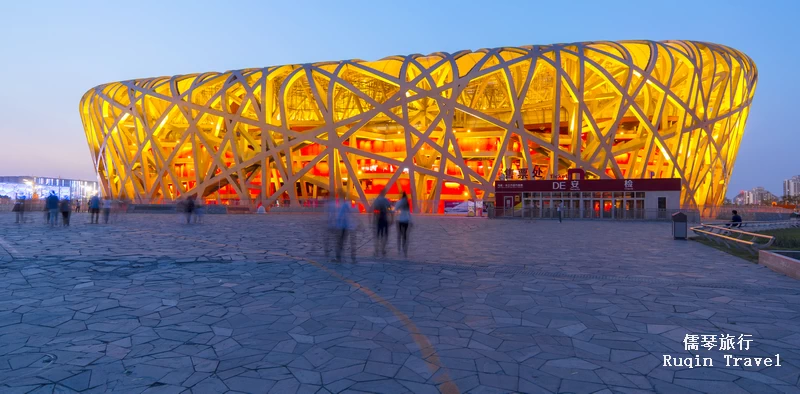
The stadium remains an iconic symbol of Beijing’s modern era and is still used for sporting events and concerts. The Bird’s Nest is a must-visit for architectural enthusiasts and offers countless photography opportunities, especially at sunset when the structure glows under the fading light.
How to get there: Take Subway Line 8 to Olympic Sports Center Station, and the stadium is just a short walk away.
5. The Water Cube (National Aquatics Center)
Adjacent to the Bird’s Nest is the Water Cube, officially known as the National Aquatics Center. This modern structure, designed by Australian architects PTW, features a unique bubble-like exterior, mimicking the molecular structure of water. It was also built for the 2008 Beijing Olympics and remains one of the most iconic landmarks in Beijing.
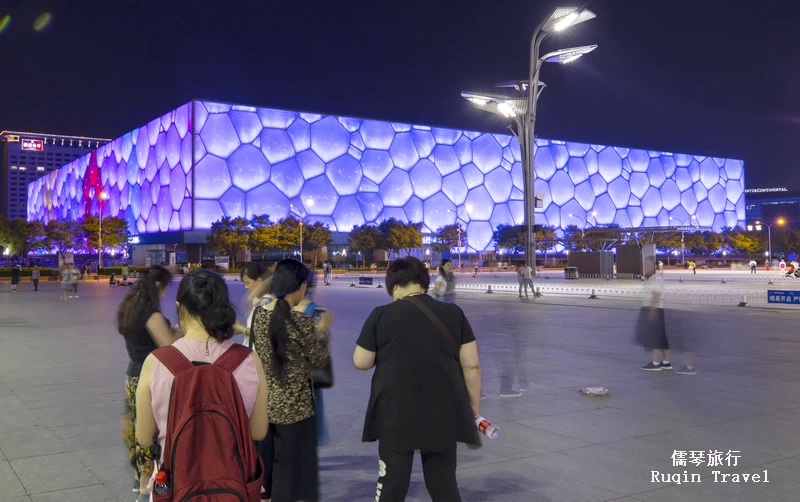
The Water Cube now serves as a water park and exhibition center. At night, the building is illuminated with a blue glow, giving it an otherworldly appearance. Together with the Bird’s Nest, it forms part of Beijing’s most famous modern architectural pair.
How to get there: Like the Bird’s Nest, the Water Cube is accessible via Subway Line 8 at Olympic Sports Center Station.
6. China World Trade Center Tower III
The China World Trade Center Tower III is one of the tallest building in Beijing, rising 330 meters above the city. Located in the bustling Central Business District, this skyscraper is an essential part of Beijing’s modern cityscape. It houses luxury offices, a hotel, and observation decks offering panoramic views of the city.
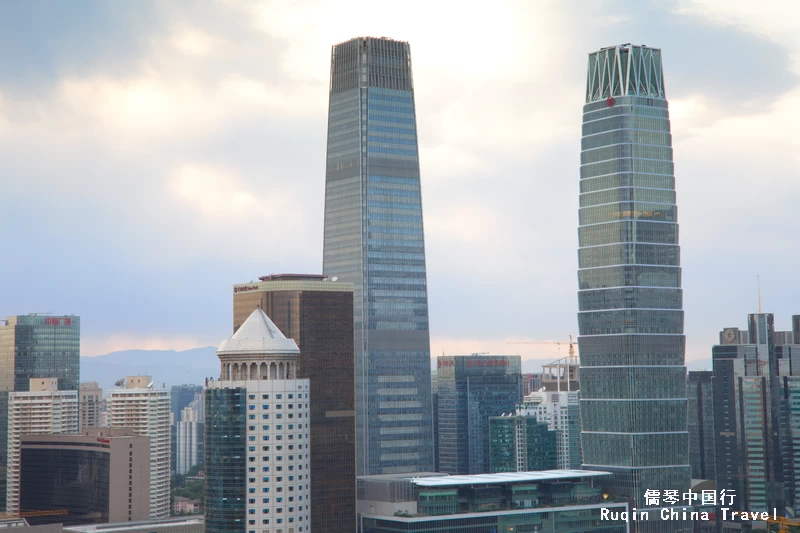
The sleek, minimalistic design of the tower reflects Beijing’s aspiration to be a global business hub. Its height and location make it one of the must-see modern buildings in Beijing.
How to get there: Take Subway Line 1 to Guomao Station, and the tower is just a few minutes away.
7. The Beijing Phoenix International Media Center
The Beijing Phoenix International Media Center is a relatively new addition to the city’s modern architectural landscape. This massive structure is designed to look like a Möbius strip, creating a continuous, looped form that represents infinity. The building’s glass facade reflects light in different ways depending on the time of day, making it a photographer’s dream.
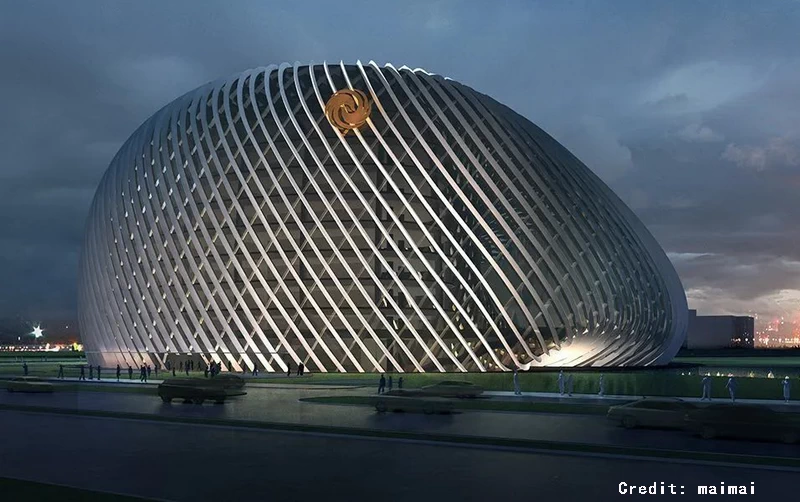
Designed by BIAD, this structure stands out for its futuristic appearance, and it has quickly become one of the top contemporary architecture in Beijing.
How to get there: The media center is located in the Chaoyang District and can be accessed via Subway Line 14 at Wangjing South Station.
8. Linked Hybrid
The Linked Hybrid complex is an impressive example of sustainable modern architecture in Beijing. Designed by architect Steven Holl, this innovative residential and commercial building features skybridges connecting its towers, creating a dynamic, interactive space for its residents. The complex also uses advanced green technology to reduce energy consumption.
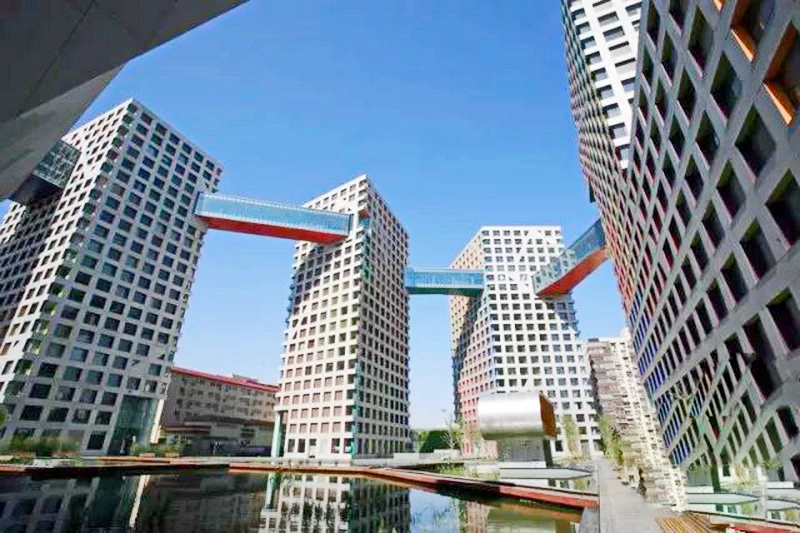
Its futuristic design and eco-friendly credentials make it one of the best modern landmarks in Beijing. Visitors can admire its bold architecture from the outside or explore its interior walkways and green spaces.
How to get there: Take Subway Line 5 to Dongzhimen Station and walk for about 15 minutes to reach Linked Hybrid.
9. Beijing Daxing International Airport
Opened in 2019, Beijing Daxing International Airport is one of the largest and most futuristic airports in the world. Designed by Zaha Hadid, its starfish-shaped structure combines sleek design with functionality. The terminal’s expansive open spaces and sweeping curves make it one of the most impressive examples of modern architecture in Beijing.
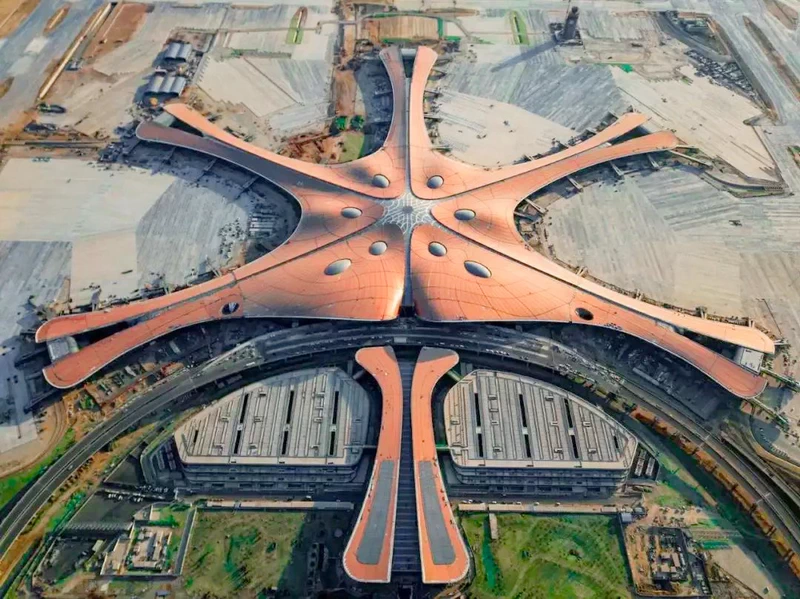
The airport’s cutting-edge technology, combined with its visually stunning design, has made it a must-see for architecture enthusiasts visiting Beijing.
How to get there: Daxing Airport is located about 46 km south of central Beijing and can be accessed via the Daxing Airport Express Line from Caoqiao Station on Subway Line 10.
10. China Zun (CITIC Tower)
The China Zun, also known as the CITIC Tower, is the tallest building in Beijing, standing at an impressive height of 528 meters (1,732 feet). Located in the heart of Beijing’s Central Business District (CBD), China Zun’s sleek, tapering design is inspired by an ancient Chinese ritual vessel, known as a “zun.” The building’s elegant curvature and towering presence make it a dominant feature of Beijing’s modern skyline.
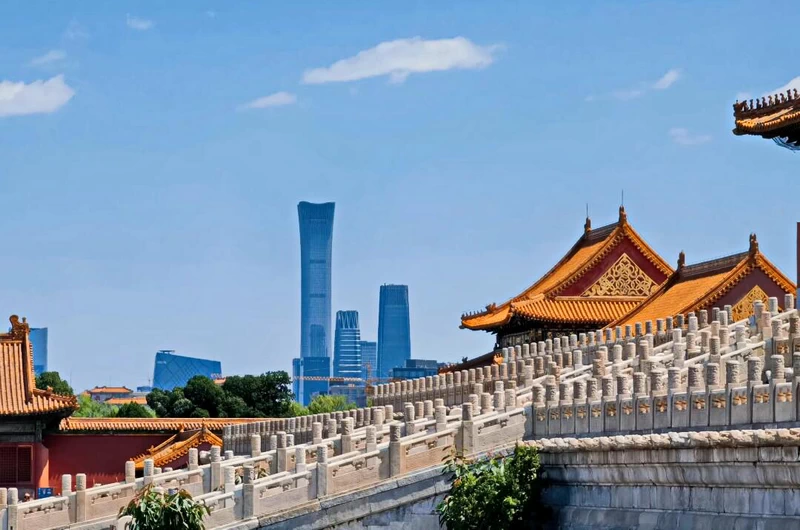
As the centerpiece of the city’s skyline, the China Zun is home to offices, restaurants, and observation decks that offer breathtaking panoramic views of Beijing. Its status as the tallest building in Beijing makes it one of the most iconic contemporary landmarks in Beijing, providing visitors with an opportunity to experience the city from a completely new perspective.
How to Get to China Zun
By Subway:
Take Subway Line 1 or Subway Line 10 to Guomao Station (国贸站), exit at Exit E. From there, it’s about a 10-minute walk to the China Zun (CITIC Tower).
Beijing’s modern architecture provides a compelling contrast to its ancient temples, palaces, and historical landmarks. From the sleek curves of China Zun to the innovative design of CCTV Headquarters, the city’s contemporary landmarks embody its status as a global metropolis on the rise.
Each building tells a story of Beijing’s forward-thinking approach to architecture while maintaining respect for its deep-rooted culture. Whether you’re an architecture enthusiast or simply a curious traveler, visiting these modern buildings in Beijing will give you a new perspective on the city’s urban landscape. As Beijing continues to grow and innovate, its modern architecture will undoubtedly remain a symbol of its transformation into a truly global city.



